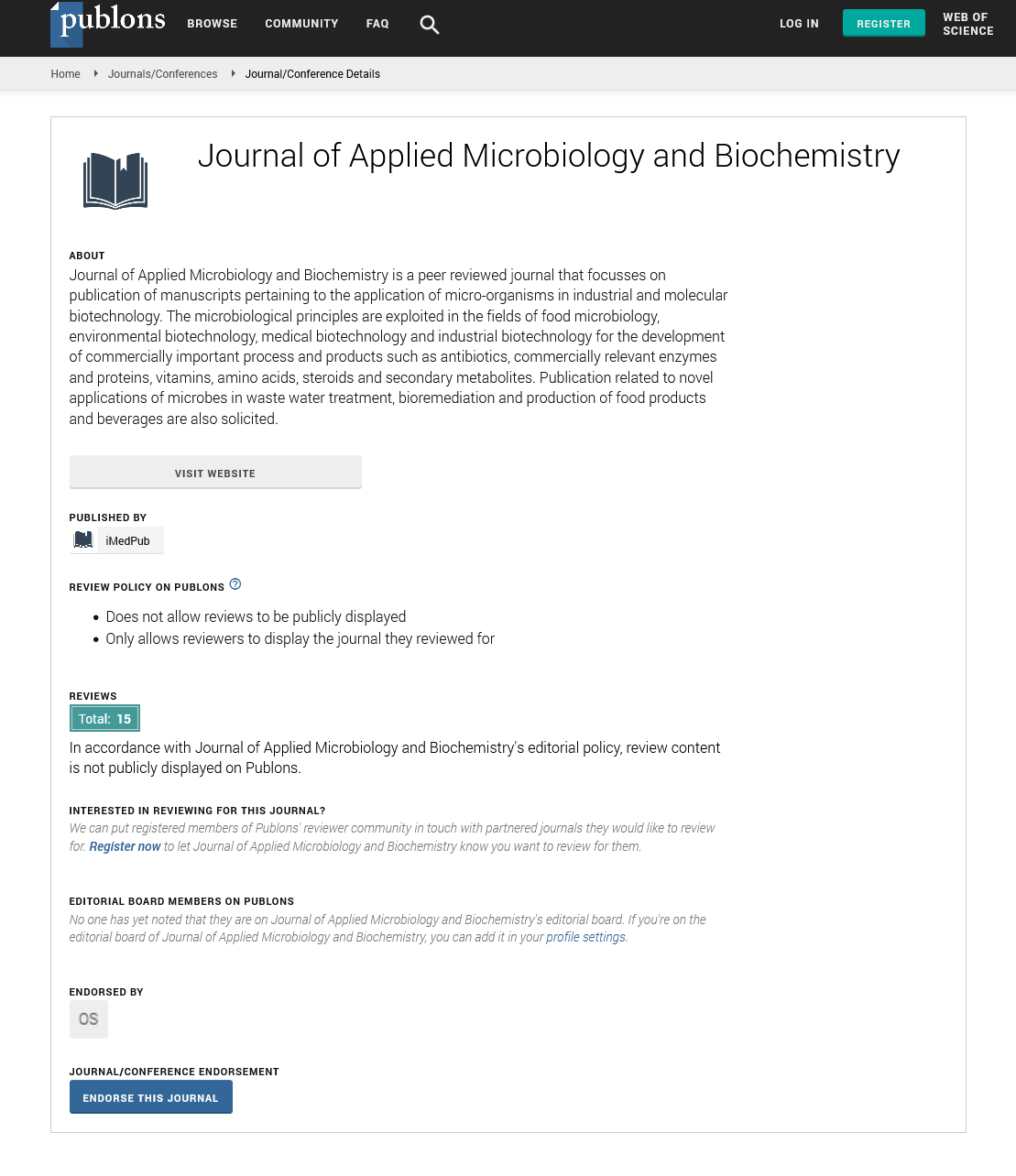ISSN : ISSN: 2576-1412
Journal of Applied Microbiology and Biochemistry
Abstract
The Suitability of Non-Invasive Sample in the Assay of Glucose in Diabetes Mellitus Diagnosis and Sex Difference
Plasma is the most patronized sample for the assay of glucose utilized as a focal biomedical marker for the diagnosis of diabetes mellitus. The procedure is painful and the cost implication is huge. Hence, the need for an alternative non-invasive sample void of painful sensation and of cheap cost implication is pertinent. In this study a total of 100 subjects were utilized and divided into two groups of fifty each. The first group constituted apparently healthy individuals, whereas the second was made up of subjects diagnosed with type 2 diabetes mellitus. Glucose was estimated quantitatively in the blood and the saliva using glucose oxidase method. Pearson correlation analysis was used to established relationship between plasma and salivary glucose, whereas t-student test was utilized to evaluated significant level based on sex difference. The result indicated that correlation was not observed between fasting blood glucose and fasting salivary glucose of diabetics as well as control subjects. However correlation was observed between fasting blood glucose and salivary glucose amongst diabetic subjects with glucose level above threshold value. The correlation coefficient value was +0.72 proving a significant correlation statistically. Also, statistical difference was not observed based on gender on studied plasma and salivary glucose. Therefore, the findings showed explicitly that saliva could serve as an alternative sample for glucose estimation and management especially for diabetics with evidently high glucose levels. Also, gender difference for customized diagnostics is of no diagnostic importance.
Author(s): Agoro ES, Nelson-Ebimie E, Soroh AE and Odegbemi JO
Abstract | Full-Text | PDF
Share This Article
Google Scholar citation report
Citations : 342
Journal of Applied Microbiology and Biochemistry received 342 citations as per Google Scholar report
Journal of Applied Microbiology and Biochemistry peer review process verified at publons
Abstracted/Indexed in
- Google Scholar
- China National Knowledge Infrastructure (CNKI)
- Cosmos IF
- Directory of Research Journal Indexing (DRJI)
- Publons
- Secret Search Engine Labs
Open Access Journals
- Aquaculture & Veterinary Science
- Chemistry & Chemical Sciences
- Clinical Sciences
- Engineering
- General Science
- Genetics & Molecular Biology
- Health Care & Nursing
- Immunology & Microbiology
- Materials Science
- Mathematics & Physics
- Medical Sciences
- Neurology & Psychiatry
- Oncology & Cancer Science
- Pharmaceutical Sciences
